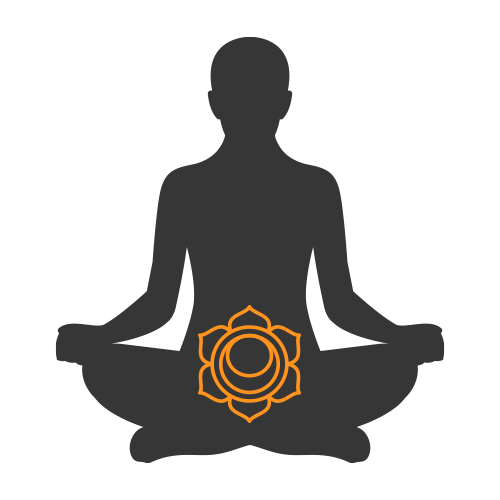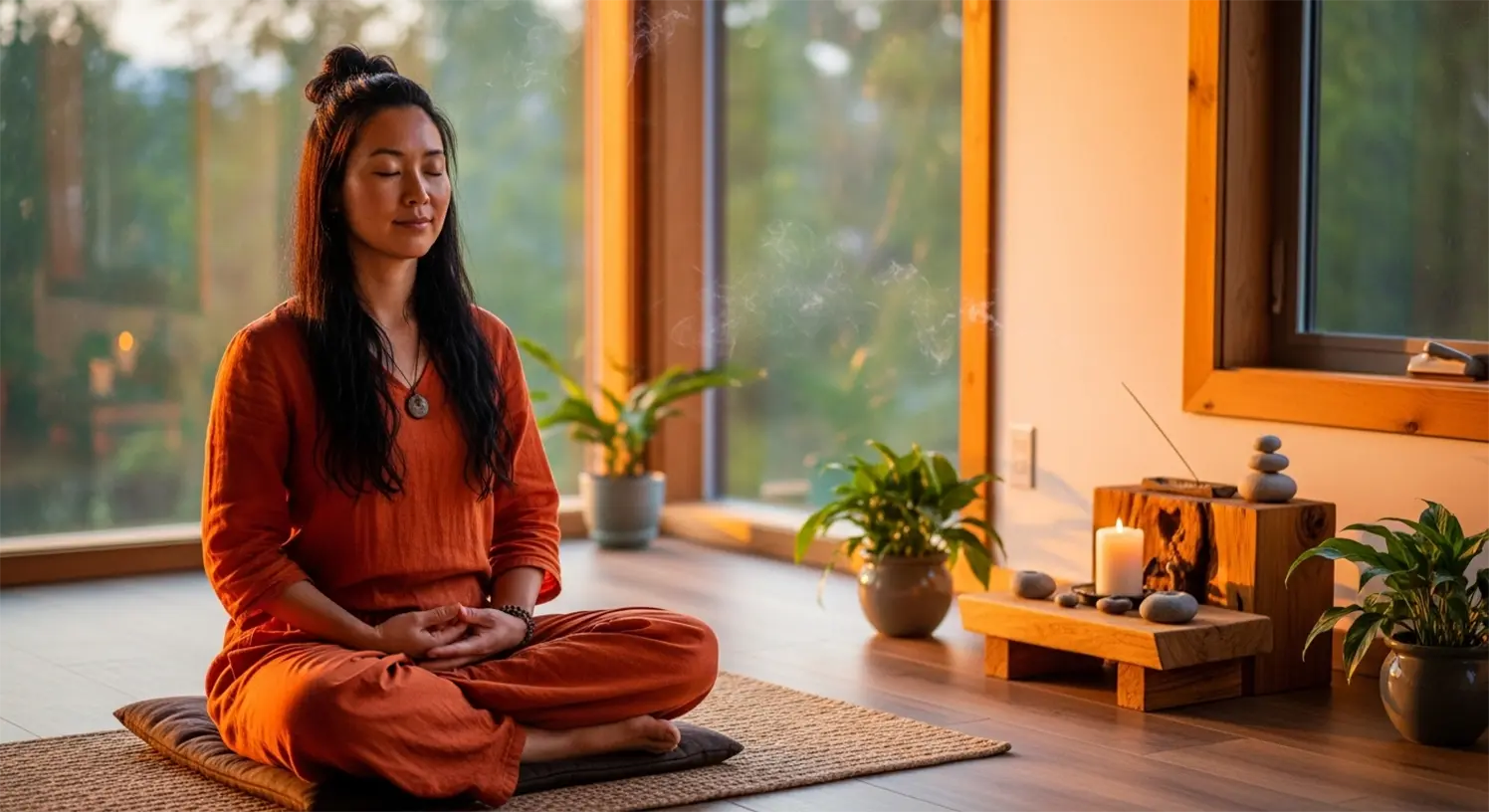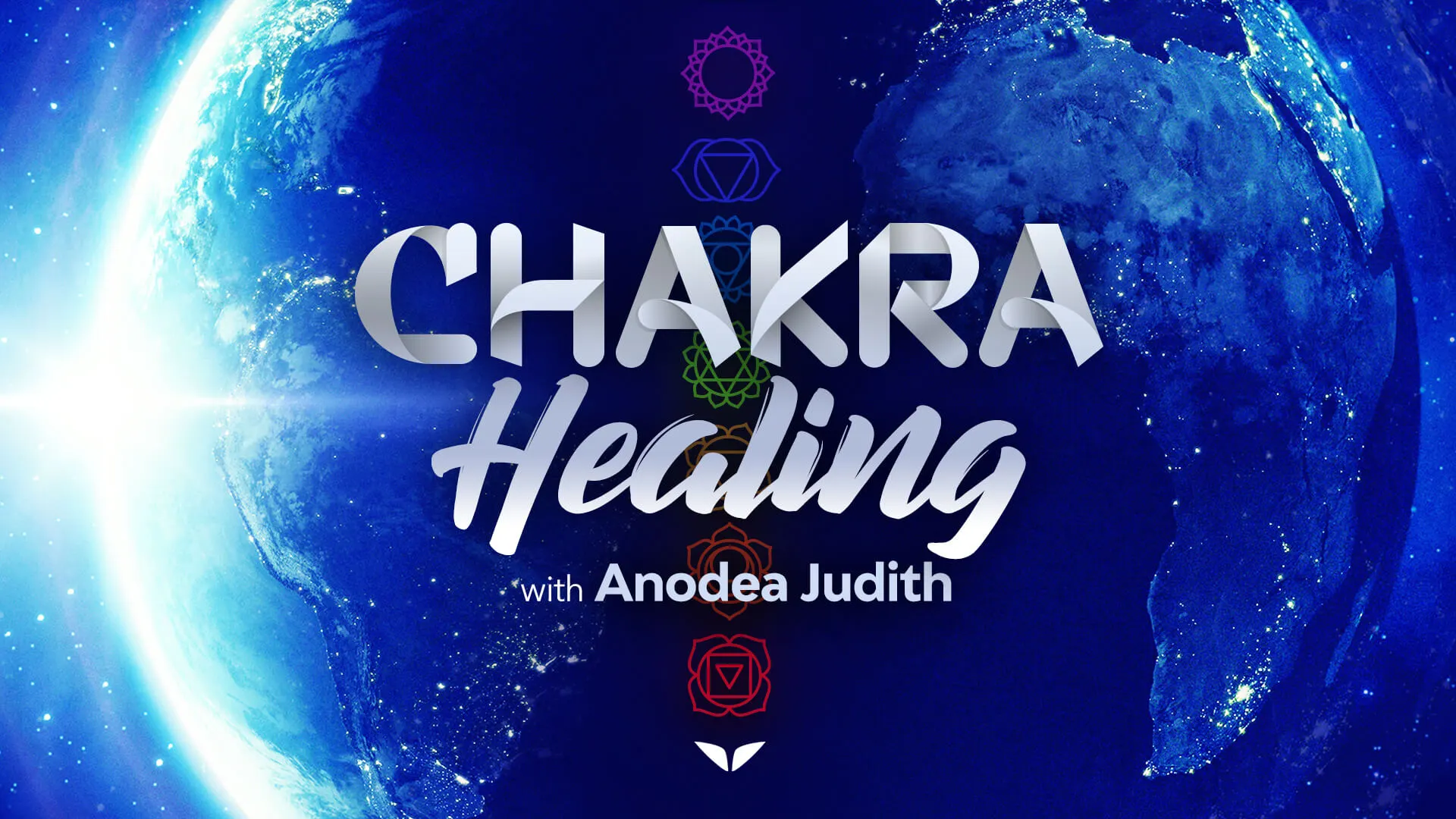What chakra can you use for sexuality, sensuality, and creative expression? This would be your sacral chakra, where your most creative potential resides.
An open, clear, balanced sacral chakra leads to joy, contentment, and harmony with feelings, emotions, and sensations. When it’s blocked, you lose touch with yourself and the world.
Luckily, you can heal this energy center and learn how to keep it balanced. And when you do, it feels really good to be alive.
What is the sacral chakra?
The sacral chakra originates from the Sanskrit word “svadhishthana,” which translates as “one’s own place.” So it is the very center of the true and untarnished aspects of you, the center of your creative potential.
Also known as sex chakra, it is associated with pleasure, sexuality, and sensuality. This energy center harbors the most potent creative powers, enabling you to create, pro-create, and build fulfilling intimate relationships.
Its main purpose is to learn how to feel, move, flow, and expand with pleasure so that you could fully enjoy your human experience.
When you feel that the ideas of passion and intimacy are pleasurable and natural, your sacral chakra is strong and healthy. It brings a feeling of happiness to your body and spirit. Life is joyous and bright.
It’s also the center where you nurture your creative ideas and from where you take your first steps to bring them into physical reality.
Where is the sacral chakra located?
Since the chakras start from the bottom up and the sacral chakra is the second, it’s closer to the root of the body. It’s located in the lower abdomen, about two inches below the navel. And because of its location, it’s believed to be connected to the sex organs.

What is the sacral chakra responsible for?
The sacral chakra represents the element water that is constantly moving and flowing. So it’s associated with your emotions, sensations, and pleasure.
According to Anodea Judith, leading expert on the chakra system and trainer of Mindvalley’s Chakra Healing Quest, the second chakra is responsible for your emotional and sexual energy, creativity, and the ability to connect with others emotionally.
It also ensures:
- Healthy emotional boundaries,
- Fulfilling relationships, and
- Experiences of pleasure and joy in life.
When it’s balanced, you have the ability to regulate and balance your emotions, change and adapt to unknown situations, be open to new experiences, and channel creativity.
Anodea states that it’s also associated with or responsible for:
- The reproductive organs, lower back, and hips,
- Your sense of self-worth and self-esteem,
- Your ability to control and balance emotions, as well as to change and adapt to new situations, and
- Creativity, experiencing pleasure, and being open to new experiences.
Why is the sacral chakra orange?
It’s associated with the color orange because its energy is related to emotions, sexuality, and creativity. So the color orange symbolizes warmth, passion, and enthusiasm—all governed by the sacral chakra.
When this energy center is balanced, it radiates warmth and enables you to speak openly about your emotions and desires.

Sacral chakra imbalance
An imbalance of sacral chakra has to do with either excessive or deficient energy. The blockages in the sacral chakra manifest in particular ways:
- Excessive sacral chakra results in being overly emotional and indulgent.
- Deficient sacral chakra results in being non-emotional and out of touch with yourself.
Anodea explains that because this energy center governs emotions and sexuality, you may have both imbalances—you can be non-emotional but overly sexual, and vice versa.
This chakra typically develops in early childhood, around the ages of two to six. Depending on how safe or unsafe we feel, we pull back from negative sensations or feelings or move towards pleasures.
Here are some causes of sacral chakra imbalance:
- Denial of the child’s feelings. When a child is told not to cry or denied what they feel.
- Unpleasant or painful environments. When the environment isn’t safe, you restrict your movement and sensations. As a result, you have trouble moving out and forward in your life.
- Unbalanced emotional environment. We speak the language of our parents, so when our parents’ way of expressing their emotions is volatile or flat, we copy this pattern.
And as a consequence of each or all of these circumstances, we can get out of touch with ourselves.
Signs of the balanced chakra
The following are some signs of a balanced sacral chakra:
- A healthy expression of sexuality and sensuality,
- The ability to feel pleasure and be open to new experiences,
- A sense of emotional flow and flexibility,
- The ability to form healthy relationships,
- The ability to be creative and enjoy the arts,
- A sense of abundance and connection to life,
- A stable emotional state and resistance to negative emotions, and
- Good physical health, specifically in the lower abdomen and reproductive organs.
In essence, when your chakra is balanced, you are in tune with yourself. You feel the world within and around you.
Signs of the blocked chakra
The following are some signs of the blocked sacral chakra:
- Difficulty in feeling pleasure or experiencing sensuality,
- Emotional numbness or difficulty expressing emotions,
- Lack of flexibility in your emotions or unstable emotional states,
- Difficulty forming or maintaining healthy relationships,
- Blocked creativity,
- Fear of change or new experiences,
- Physical issues such as lower back pain, menstrual cramps, and infertility, and
- Depression.
The bottom line is that if you feel disconnected from your body, feeling guilt or shame about expressing your feelings and desires, your sacral chakra needs healing.
7 ways to heal sacral chakra
The key to understanding how you can heal this chakra has to do with the main challenge of this center—guilt.
Anodea elaborates that we develop guilt when our feelings and sensations are denied, so it stops the natural flow of emotions and desires.
Here are seven ways you can heal your sacral chakra:
1. Meditate and visualize
Meditate and visualize the color orange, the sacral chakra’s color.
How to do it:
- Sit or lie down in a comfortable position.
- Close your eyes and visualize a bright orange light, or a bright orange symbol such as a lotus flower, in the area of your sacral chakra (just above the pubic bone and below the navel).
- Imagine this light or symbol glowing and becoming brighter and brighter, filling your whole body with warmth and energy.
- As you visualize it, repeat this affirmation: “I am open to pleasure and abundance. I trust in my ability to create and manifest my desires.”
2. Tune into your bodily sensations
To be in tune with your body, you can practice tuning into your sensations. Begin to track your bodily sensations—there might be a sensation of numbness, emptiness, or just void. And as you do, they will turn into feelings.
Anodea explains that we don’t choose what we feel but we can accept and choose what we do with them. This choice allows us to begin the true process of healing because we cannot heal what we cannot feel.
3. Express your feelings and emotions
The next step in healing your sacral chakra is to express your feelings, emotions, and desires freely, without guilt or shame.
When you feel your emotions, it’s important to learn how to move them and express them by sharing them with other people. This is how you will balance the excessive or deficient energy,
It’s also a practice of being vulnerable by sharing your emotions without judgments.
3. Yoga
There are specific yoga poses that can be practiced to heal this center of pleasure and passion
The sun salutation pose is a good start and can provide order as required early in the morning.
Other poses include seated spinal twists, hip openers, and forward folds to help release tension and open up the sacral chakra.
4. Mantra
Chanting chakra mantras is a powerful way to heal your chakras. The sacral chakra is associated with the color orange and the sound “VAM.” By chanting “VAM” you can cleanse, heal, and restore this energy center.
Another mantra that can be used to balance the sacral chakra is “Om Shreem” or “Om Shreem Hreem Shreem Kamale Kamalalaye Praseed Praseed” which are said to invoke the energy of the goddess, associated with abundance, creativity, and emotional balance.
You can repeat these mantras silently or out loud while focusing on the sacral chakra area. You can also use mala beads to keep count of your repetition.
5. Mudras
Mudras are hand gestures and positions used in spiritual practices to heal the body, mind, and emotions. There specific mudras you can use during a sacral chakra meditation to help open it up.
A mudra associated with the sacral chakra is called “Sakthi Mudra,” representing the goddess Sakhti which symbolizes power, energy, and creativity.
Here’s how to perform it:
- With your palms in front of your chest, press your pinky and ring fingertips together.
- Fold your thumbs into your palms, inside of your index and middle finger. You can then press the knuckles of these two fingers together (pictured) or keep them separate.
- Hold this position for a few minutes while focusing on the sacral chakra area, which is located just above the pubic bone and below the navel.
Any mudra should be practiced in a comfortable position and can be done for a few minutes a day or for longer periods as you feel comfortable. You can repeat the mudra for several minutes at a time, several times a day.
6. Acupressure
Acupressure is a form of traditional Chinese medicine that involves applying pressure to specific points on the body to relieve pain and promote healing. With the help of the right techniques, acupressure can release tension in the organs, corresponding to the sacral chakra.
Applying pressure to specific points helps balance the sacral chakra and relieve lower back pain, menstrual cramps, headaches, sexual dysfunction, and infertility.
Here are a few acupressure points that can be used to heal the second chakra:
- Spleen 6 (SP6). This point is located three finger widths above the inner ankle bone, on the inside of the leg.
- Kidney 3 (K3). This point is located on the sole of the foot, in the depression between the big toe and the second toe.
- Bladder 23 (BL23): This point is located on the back, at the level of the lower edge of the second lumbar vertebrae, about an inch out from the spine.
- Large Intestine 4 (LI4). This point is located on the back of the hand, in the fleshy web between the thumb and index finger.
Acupressure should be done with gentle, steady pressure but without any painful sensations. It’s advisable to consult with a licensed acupressurist or other qualified practitioners before trying acupressure to ensure it’s safe and appropriate for you.
7. Other methods
Sexual intimacy, massage, adding clothes featuring the sacral chakra to your wardrobe, and playful contact sports are proven to help with balancing the chakra.
“One of the most positive things about healing your second chakra is that all it really requires is for you to do more of what makes you happy. It’s doing all the simple things, like dancing, singing, yoga, or running,” says Anodea.
In other words, the most organic way to heal your pleasure is to do more of what you love.
Charge your chakras, charge your life
Healing your sacral chakra starts with acknowledging your right to feel and letting yourself feel them. This is how you cultivate your knowledge of what feels right for you in every situation and be unapologetic about expressing them.
Despite the programmed blockages of this chakra, you can learn how to heal it to live your life fully by joining Anodea Judith on Chakra Healing program.
You will embrace the fluidity of the sacral chakra and return to your natural state of creativity and self-expression. Most importantly, you will holistically heal your body, mind, and spirit, and transform every aspect of your human experience.
You can sample classes of this quest by unlocking your free access.
Welcome in.







